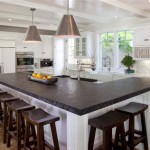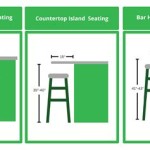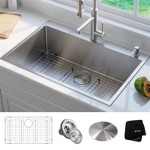Glass Kitchen Tiles for Backsplash
Glass tiles offer a unique and versatile option for kitchen backsplashes, adding a touch of elegance and practicality to the heart of the home. Their reflective qualities can brighten a space, while their non-porous nature makes them exceptionally easy to clean. This article will explore the various aspects of using glass tiles for kitchen backsplashes, including their types, benefits, installation process, and maintenance.
Several types of glass tiles are available for backsplashes. These include clear glass tiles, which create a seamless and modern look, allowing the wall color or texture to show through. Colored glass tiles offer a vibrant splash of personality and can be used to create patterns or focal points. Textured glass tiles add depth and visual interest with embossed or etched surfaces. Recycled glass tiles are an eco-friendly option that incorporates pre-consumer or post-consumer recycled glass. Finally, iridescent or metallic glass tiles add a touch of glamour and sophistication with shimmering finishes.
The benefits of using glass tiles for backsplashes are numerous. Their non-porous surface is impervious to stains, moisture, and bacteria, making them exceptionally hygienic and easy to clean. This characteristic also makes them resistant to mold and mildew growth. Glass tiles reflect light, making the kitchen appear brighter and larger. They offer a wide variety of colors, sizes, shapes, and finishes, providing design flexibility for any style. Furthermore, glass tiles are durable and long-lasting, providing a cost-effective solution in the long run.
Before embarking on the installation process, proper preparation is essential. The wall surface should be clean, dry, and level. Any existing wallpaper or loose paint needs to be removed. It is recommended to apply a primer suitable for glass tile installation to ensure proper adhesion. Choosing the right adhesive is crucial; thin-set mortar specifically designed for glass tiles is typically recommended. Spacers are used to maintain consistent grout lines and ensure a professional finish.
The installation process typically begins by applying the thin-set mortar to the wall with a notched trowel. Tiles are then pressed firmly into the mortar, using spacers to maintain even gaps. After the adhesive has cured, the spacers are removed, and the grout is applied, filling the spaces between the tiles. Excess grout is wiped away with a damp sponge, leaving a clean and finished surface. It is important to allow the grout to cure fully before exposing it to moisture or heavy use.
Maintaining the beauty and longevity of a glass tile backsplash is relatively straightforward. Regular cleaning with a mild detergent and warm water is usually sufficient. Avoid abrasive cleaners, which can scratch the glass surface. For stubborn stains, a mixture of baking soda and water can be used. Sealing the grout lines periodically can help prevent staining and discoloration. Promptly addressing any chipped or cracked tiles can prevent further damage and maintain the overall integrity of the backsplash.
Several factors influence the cost of a glass tile backsplash. The type of glass tile chosen is a primary factor; specialty tiles like iridescent or hand-painted tiles typically command a higher price. The size and complexity of the backsplash area also affect the overall cost. Labor costs can vary depending on the installer's experience and the region. Finally, the cost of materials such as adhesive, grout, and sealers should be factored into the budget.
Choosing the right glass tile backsplash involves considering several factors. The existing kitchen décor and desired aesthetic play a significant role in selecting the tile color, size, and finish. The amount of natural light in the kitchen can influence the choice of color and reflectivity. Maintenance requirements and ease of cleaning should also be considered. Finally, setting a realistic budget and exploring various options within that budget will help narrow down the choices and ensure a satisfactory outcome.
Glass tile backsplashes can complement a variety of kitchen styles. They can add a modern and sleek touch to contemporary kitchens. In traditional kitchens, glass tiles can introduce a subtle hint of elegance. For transitional kitchens, glass tiles offer a versatile option that blends classic and contemporary elements. Even in rustic kitchens, certain types of textured or colored glass tiles can create a unique and appealing contrast.
Compared to other backsplash materials, glass tiles offer distinct advantages. While ceramic tiles can be more cost-effective initially, glass tiles offer superior stain resistance and ease of cleaning. Natural stone backsplashes, though beautiful, require more maintenance and are susceptible to staining. Stainless steel backsplashes offer a modern look but can be prone to scratches and dents. Glass tiles offer a balance of aesthetics, durability, and practicality that distinguishes them from other materials.

10 Glass Tile Kitchen Backsplash Ideas 2024 The Shiny Ones Modern Tiles

Glass Tile Backsplash Ideas Pictures Tips From Hgtv

Bodesi Deep Ocean Glass Tile For Kitchen Backsplash And Showers 3 In X 6 Sample 0 125 Sq Ft Piece Hpt Do S The Home

Glass Backsplash Ideas Pictures Tips From Hgtv

5 Advantages Of A Glass Backsplash Atlantic

Great Glass Backsplash Ideas For The Home Cbd

23 Best Glass Backsplash Kitchen Ideas Renovation

Art3dwallpanels 6 In D X 3 W 1 H Peel And Stick Glass Backsplash Tile For Kitchen White Subway H16hd321p32 The Home

Glass Tile Backsplash Ideas Pictures Tips From Hgtv

How To Cut Glass Tile With 4 Types Of Tools Bob Vila








